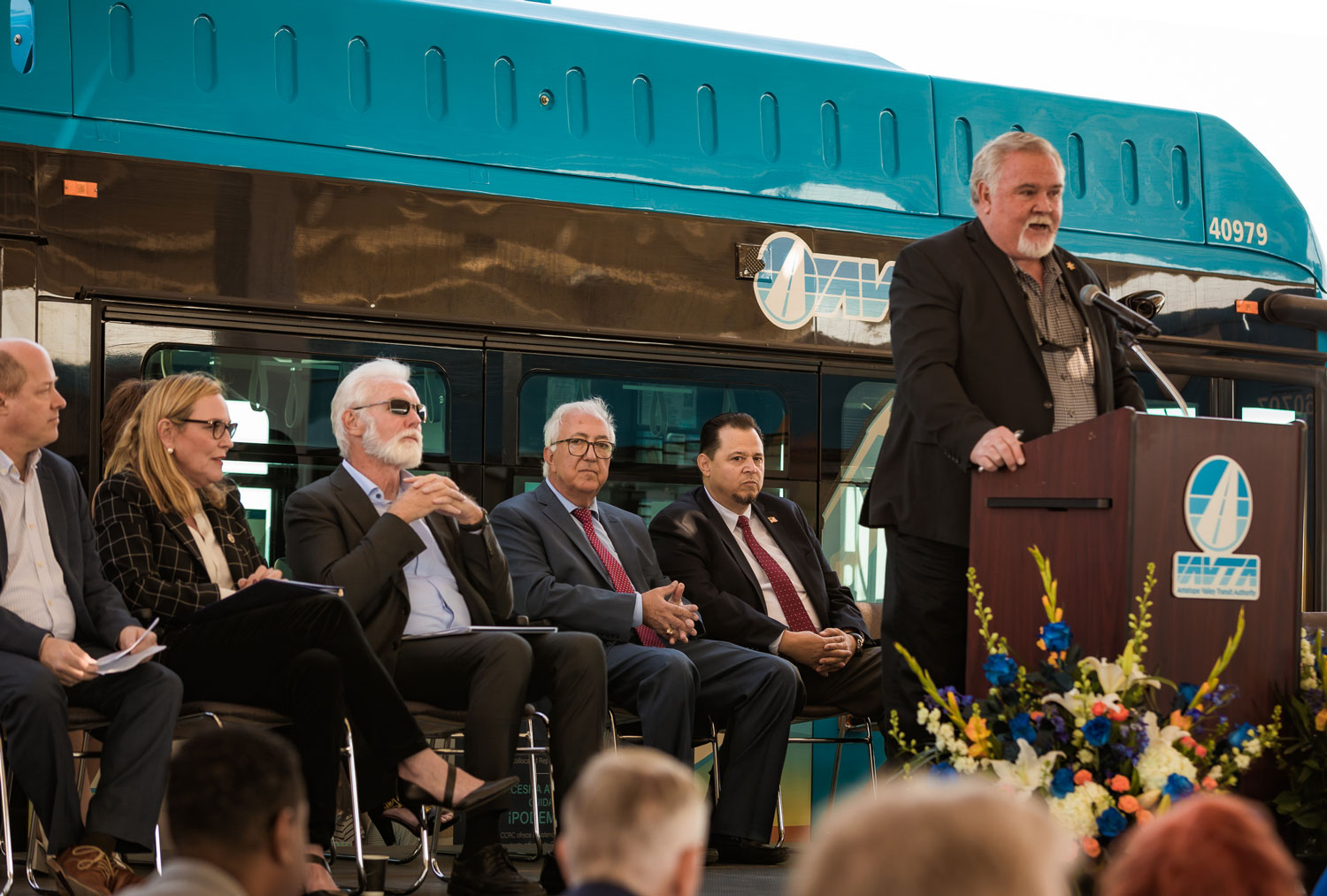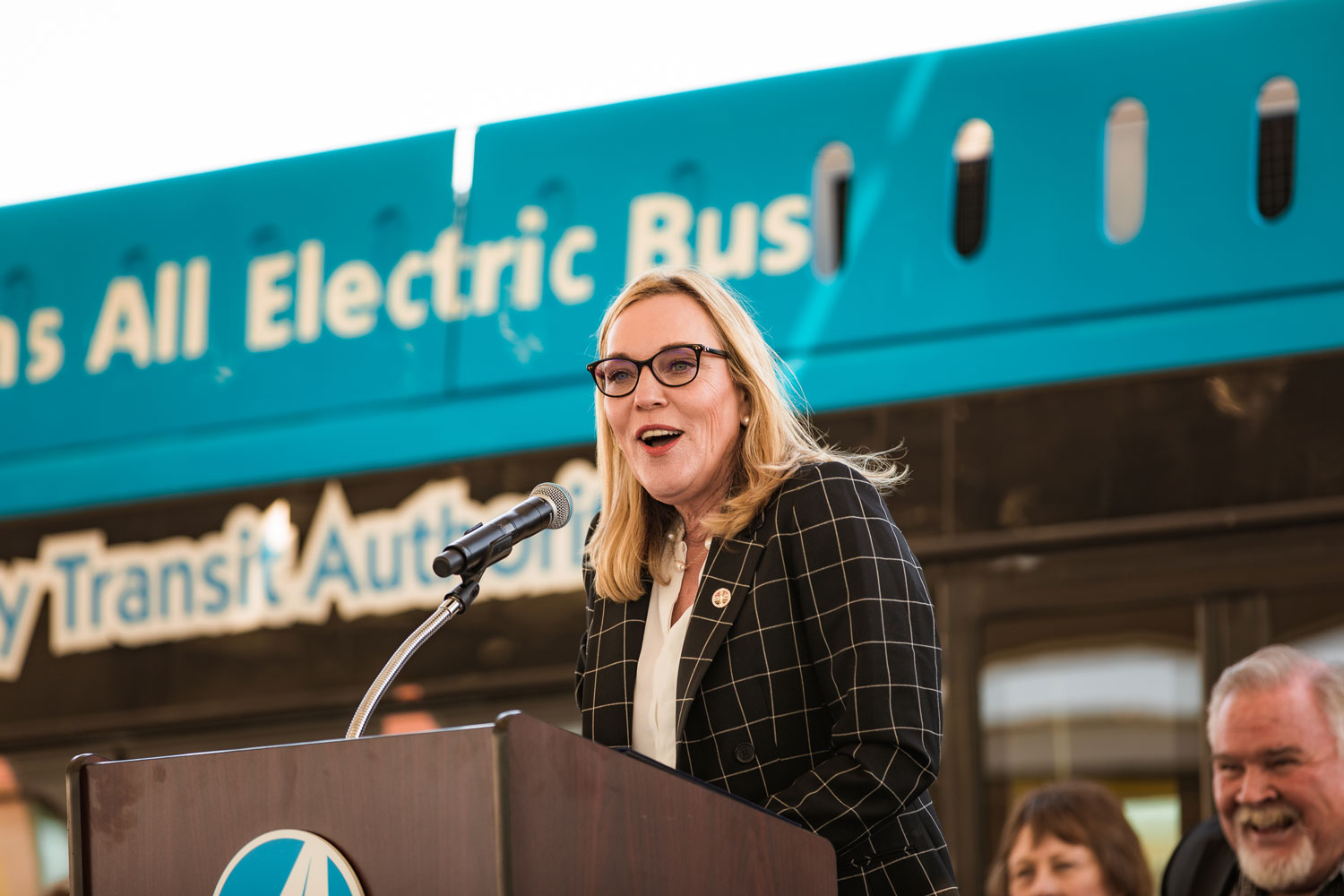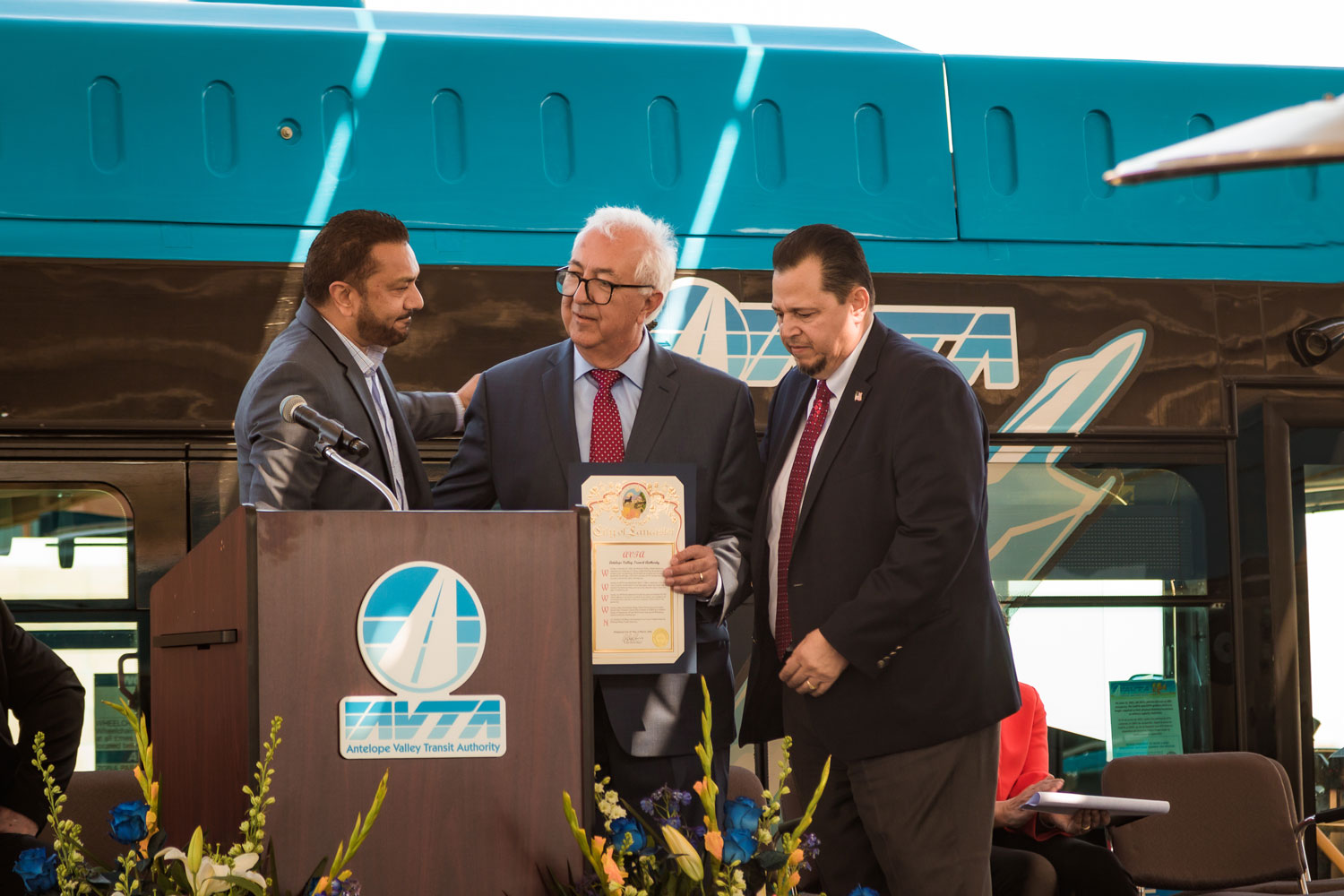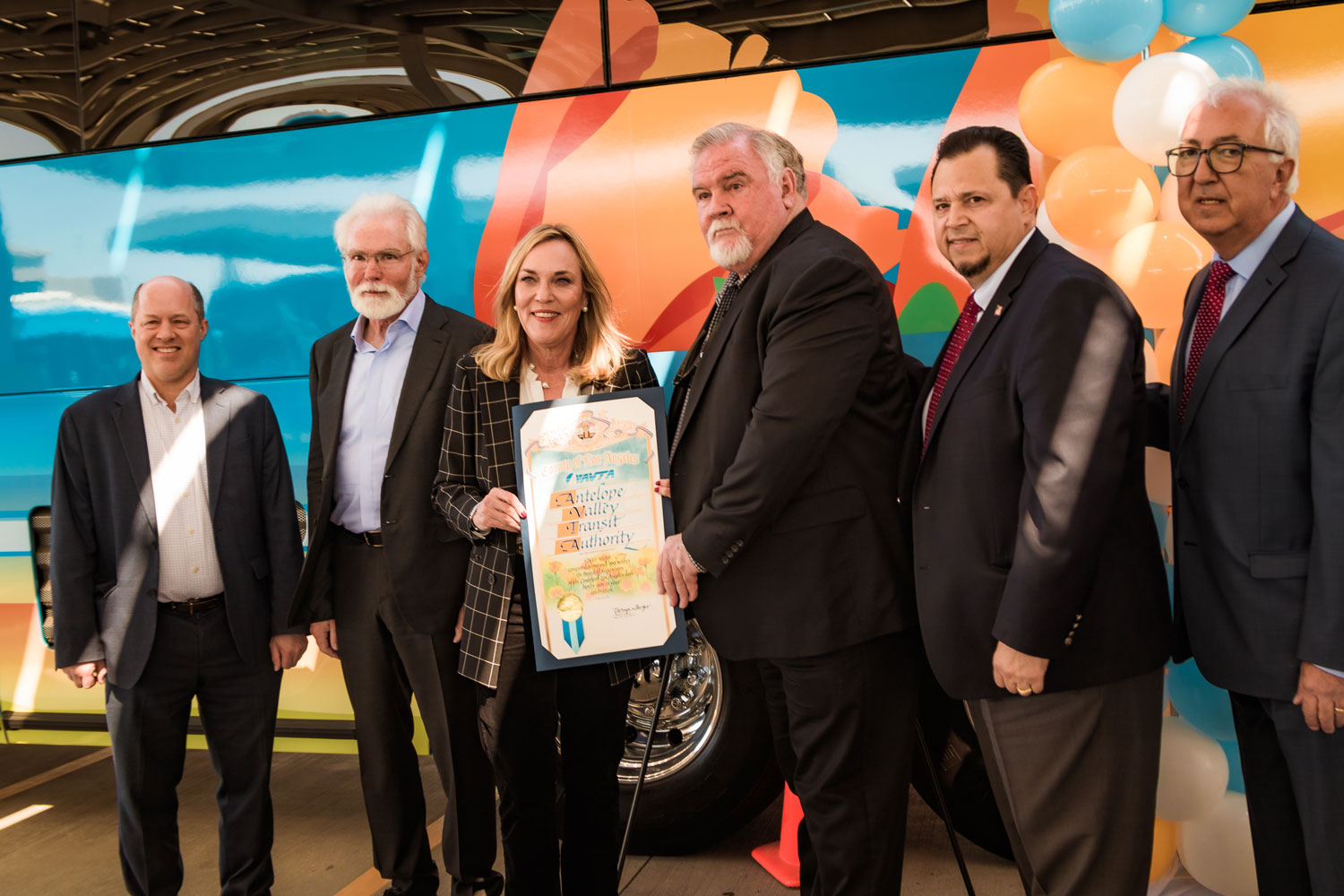AVTA Becomes the First All-Electric Zero-Emission Transit Agency in North America
On March 16, 2022, the Antelope Valley Transit Authority Board of Directors, along with the California Air Resources Board (CARB), hosted a celebration recognizing AVTA becoming the first all-electric transit agency in North America. Antelope Valley Transit Authority received their 20th electric MCI coach for their commuter routes. The addition of these buses to AVTA’s fleet of BYD zero-emission buses, enables the agency to place into service a 100% zero-emission transit fleet.
AVTA’s journey to electrification did not happen overnight. It arrived through many steps taken by the staff of AVTA as they fulfilled the vision laid out by their Board of Directors.
“Long before we saw an electric bus rolling down the streets of the Antelope Valley, the AVTA Board envisioned a future with a greener and technologically superior transit system serving the citizens of Lancaster, Palmdale, and the rural northern Los Angeles County communities,” said AVTA Chairman of the Board Marvin Crist. “The Board cast a vision and the AVTA staff, working together with BYD and many other electric vehicle and system providers, brought that vision to life.”

California Air Resources Board (CARB) Chair Liane M. Randolph congratulated AVTA and the Board for achieving a goal 18 years earlier than the requirement identified in California’s important Innovative Clean Transit regulation
“The Antelope Valley Transit Authority, together with the cities of Lancaster and Palmdale and Los Angeles County, has shown California and the world how local growth can coexist with clean transportation, low-carbon energy, and new local job opportunities,” said CARB Chair Liane Randolph. “Their accomplishment underscores the fact that committed and visionary communities are key to our clean air and climate solutions as well as a strong California economy.”

Other California State agencies, CalSTA, CEC, and CPUC, joined CARB Chair Randolph in recognizing AVTA’s achievement along with representatives from Congressman Kevin McCarthy, Congressman Mike Garcia, CA State Senator Scott Wilk, and Assemblyman Tom Lackey’s offices.
Los Angeles County Supervisor Kathryn Barger joined the AVTA Board of Directors at the event to personally congratulate AVTA for their hard work and diligence.
“Today is a proud moment for the Antelope Valley community,” said Los Angeles County Supervisor Kathryn Barger. “The fact that the nation’s first fully electric transit agency is anchored here sends a clear message: the pioneering spirit continues to thrive in the AV. It’s an honor to have been part of this effort. I‘ve worked alongside local Antelope Valley leaders to fund the initial pilot project that led to today’s milestone event. The reality of today’s over the top gas prices is a stark reminder that we must continue investing in eco-friendly mass transit. It’s no longer become a choice – it’s more of a necessity.”
AVTA’s 100% electric zero-emission transit fleet consists of:
- 57 BYD zero-emission buses
- 10 GreenPower EV Star Microtransit vans
- 20 MCI battery-electric commuter coaches
Portions of this fleet were purchased with the help of state funding, including $28.5 million from the Transit and Intercity Rail Capital Program (TIRCP) administered by Caltrans and the California State Transportation Agency. The funds were provided by California Climate Initiatives a statewide program that puts billions of Cap-and-Trade dollars to work reducing greenhouse gas emissions, strengthening the economy, and improving public health and the environment – particularly in disadvantaged communities.

Timeline to Zero Emissions:
- In February of 2016, the AVTA Board of Directors voted to purchase up to 85 new all-electric zero emission buses from BYD, officially becoming the first transit agency in the nation to commit to a 100% electric fleet.
- In 2017, AVTA installed the first 50 kw WAVE inductive charging system in Southern California and in 2018 began installing the first four 250 kW WAVE charging stations to charge its electric buses on these wireless charging pads strategically located at transit centers throughout their bus routes. As of 2021, AVTA has a total of 12 WAVE charging stations, three pads located at each of their four transit centers.
- In May of 2019, AVTA celebrated the significant milestone of achieving the first one million miles driven by its all-electric zero emission fleet of buses.
- In April 2020, as the country struggled with the beginning of a global pandemic, AVTA decommissioned the last diesel bus from service in their local fleet and became the first all-electric local bus fleet in the nation.
- In September 2020, AVTA added eight GreenPower EV Star electric vans and launched a Microtransit pilot program in the rural Los Angeles County communities in the eastern part of their service area.
- On August 24, 2021, AVTA christened the first of 24 battery-electric MCI commuter coaches, launching into service the first electric commuter coach in North America.
- In January 2022, Antelope Valley Transit Authority celebrated the significant milestone of achieving seven million miles driven by its all-electric zero emission fleet. Those seven million electric miles represent:
- 1,750,000 gallons of diesel fuel avoided
- $2,362,500 Net Savings
- 41.58 million pounds of CO2 reduced
- 130,900 pounds of particulate matter reduced

AVTA provides local, commuter and dial-a-ride service to a population of more than 450,000 residents in the cities of Lancaster and Palmdale as well as the unincorporated portions of northern Los Angeles County. Its total service area covers 1,200 square miles and it is bounded by the Kern County line to the north, the San Bernardino County line to the east, the Angeles National Forest to the south, and Interstate 5 to the West.


